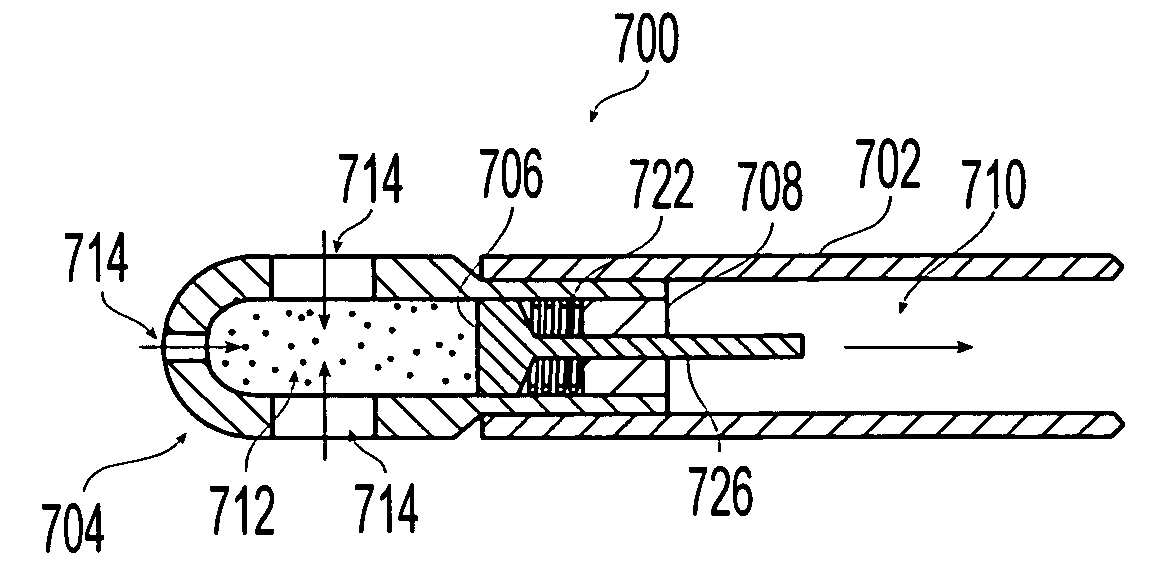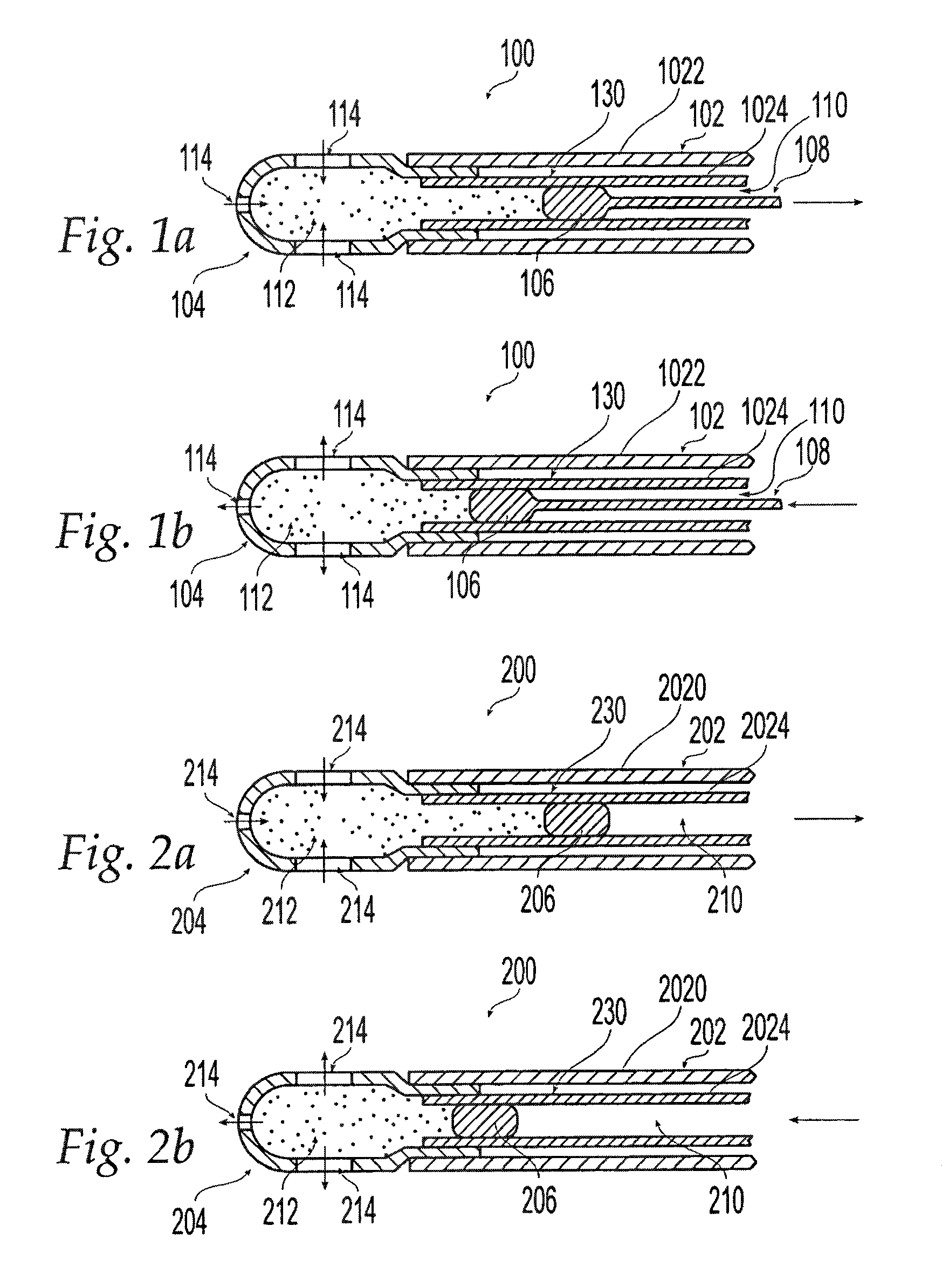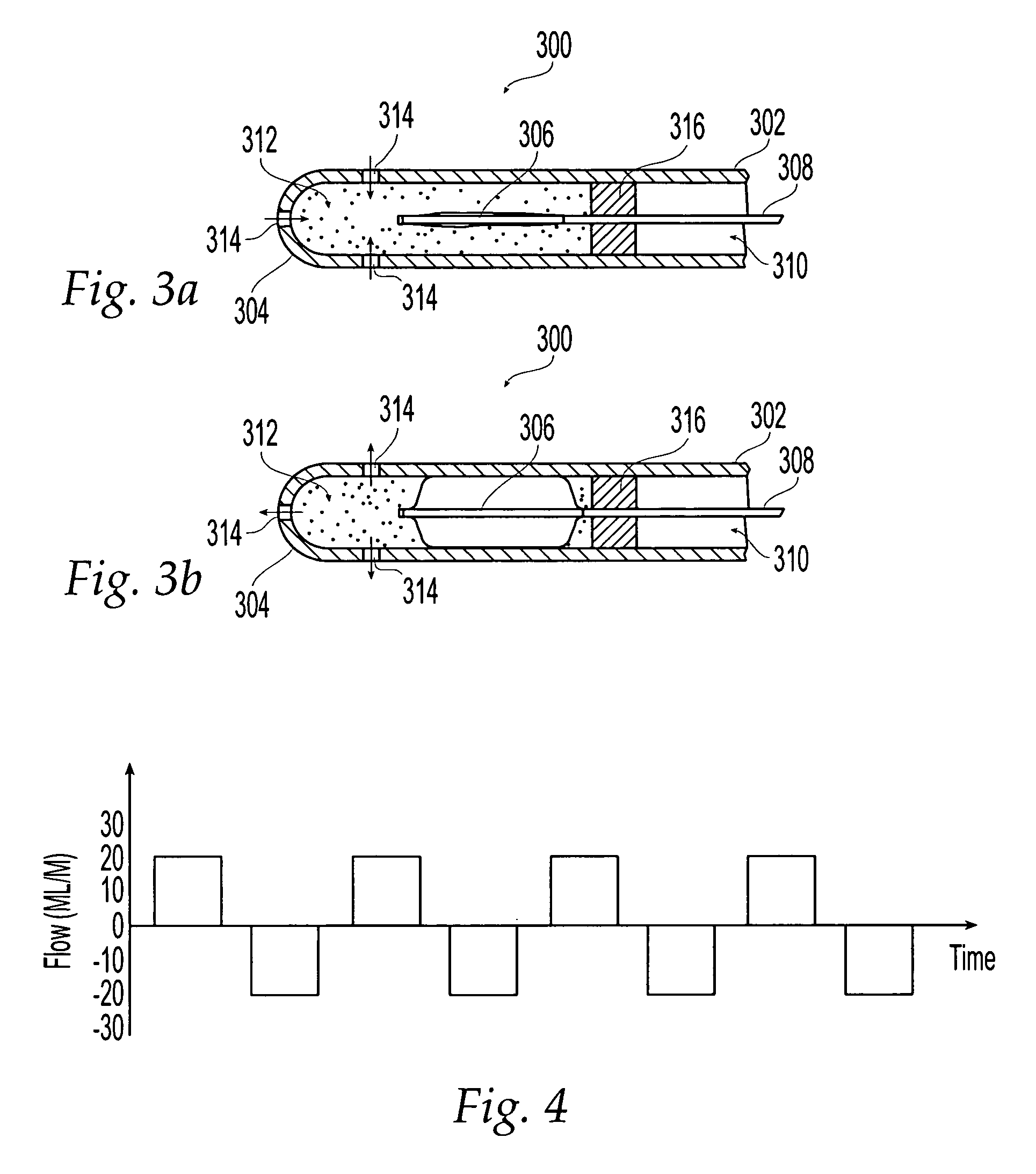Cooled ablation catheter with reciprocating flow
a technology of irrigated ablative catheter and reciprocating flow, which is applied in the field of catheters, can solve the problems of significant patient discomfort, varying levels of congestive heart failure, and blood flow stasis
- Summary
- Abstract
- Description
- Claims
- Application Information
AI Technical Summary
Benefits of technology
Problems solved by technology
Method used
Image
Examples
Embodiment Construction
[0052]An embodiment of the invention uses a plunger to cause reciprocating flow of blood into and out of a catheter electrode. Referring to FIGS. 1(a) and 1(b), side elevational views of catheter 100 are shown having a catheter body 102, an electrode 104, a plunger 106, and a plunger shaft 108. Catheter body 102 may be of varying lengths, the length being determined by the application for the catheter 100. Catheter body 102 is preferably made of a flexible durable material suitable for use within the human body, such as nonconductive polymers. Exemplary polymers used for the production of the catheter body include those well-known in the art such as polyolefins, nylons, polytetrafluoroethylene, polyvinylidene fluoride, and fluorinated ethylene-propylene polymers. As appropriate, a braiding is embedded. Catheter body 102 includes outer wall 1022 or 2020, inner wall 1024 or 2024, a large central lumen 110 and an optional annular region 130. Although shown with a double walled body, th...
PUM
 Login to View More
Login to View More Abstract
Description
Claims
Application Information
 Login to View More
Login to View More - R&D
- Intellectual Property
- Life Sciences
- Materials
- Tech Scout
- Unparalleled Data Quality
- Higher Quality Content
- 60% Fewer Hallucinations
Browse by: Latest US Patents, China's latest patents, Technical Efficacy Thesaurus, Application Domain, Technology Topic, Popular Technical Reports.
© 2025 PatSnap. All rights reserved.Legal|Privacy policy|Modern Slavery Act Transparency Statement|Sitemap|About US| Contact US: help@patsnap.com



